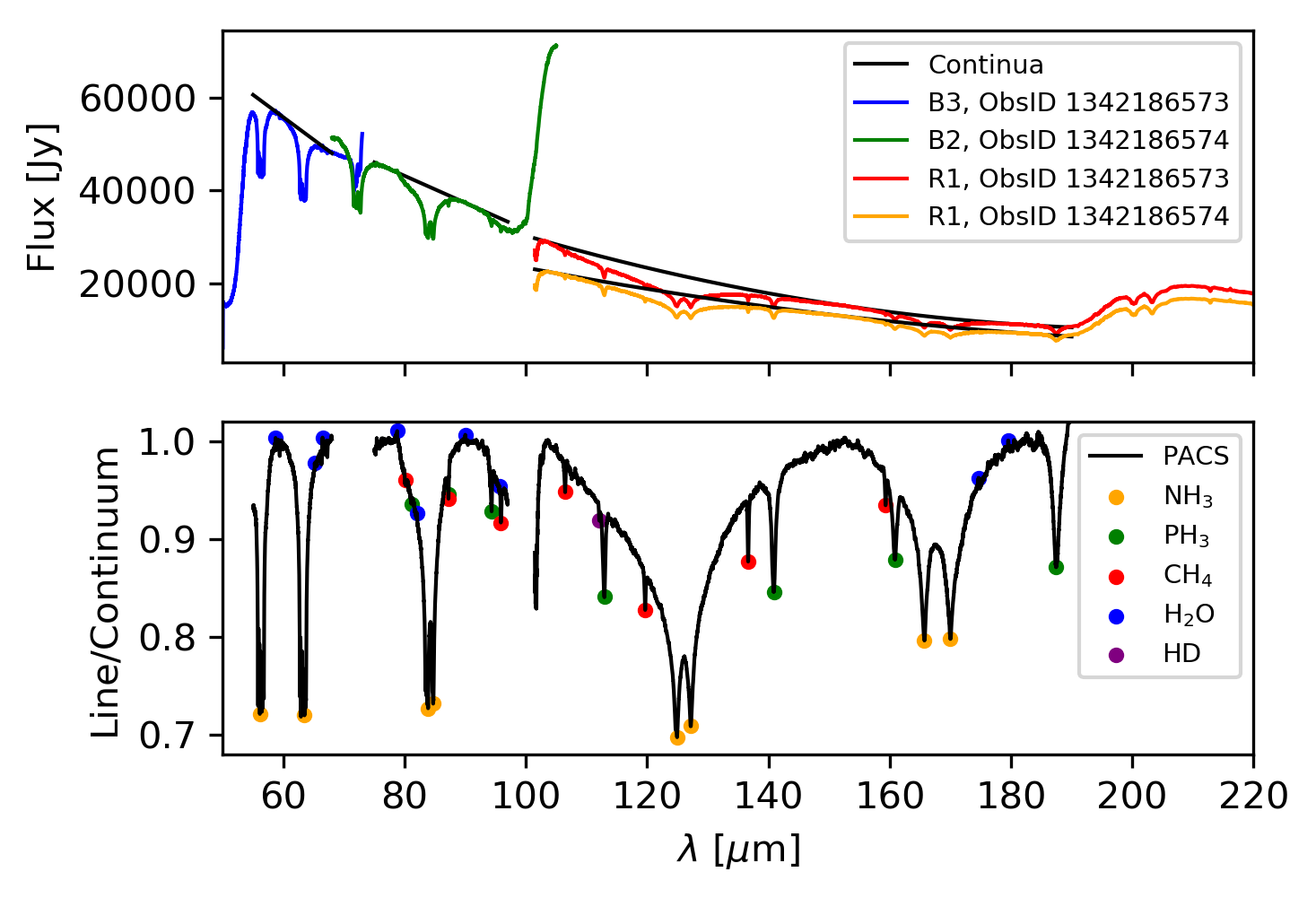Publications
You can find a list of my publications on the Astrophysics Data System (ADS).
WASP-121b’s transmission spectrum observed with JWST/NIRSpec G395H reveals thermal dissociation and SiO in the atmosphere (2025, AJ 169 341)
WASP-121b is an extrasolar gas giant orbiting an F6-type star in a distance less than two times the star’s diameter, making it one of the hottest planets known. Its transmission spectrum observed with JWST/NIRSpec (see below) shows a clear absorption feature of gas-phase silicon monoxide (SiO) between 4.0 and 4.3µm. This molecule has not been detected in any planet’s atmosphere before, because in gaseous planets, silicon is expected to be condensed into clouds or locked in the deep interior unless atmospheric temperatures become as high as they are in WASP-121b. With the detection of silicon monoxide, we can aim to quantify the amount of rocky material that was accreted by the planet during its formation and migration to its current orbit as any silicate rocks that hit the planet in the past will have been vaporized into the atmospheric silicon monoxide we see today.
In addition to silicon monoxide, the transmission spectrum shows a fairly shallow water (H2O) and a massive carbon monoxide (CO) absorption feature. Three-dimensional models suggest that the carbon monoxide feature is not only set by the atmospheric carbon monoxide abundance, but also by the thermal dissociation of molecular hydrogen (H2), the primary constituent of the atmosphere, into atomic hydrogen on the dayside. By reducing the dayside atmosphere’s mean molecular weight, H2 dissociation boosts the absorption feature of carbon monoxide. The water feature is not sensitive to this effect, because water, unlike carbon monoxide, dissociates on the dayside, making the water feature sensitive to the nightside’s atmospheric conditions only. Thus, the transmission spectrum we see is the composite of atmospheric conditions in WASP-121b’s two very distinct hemispheres.

ADS
MPIA’s press release
Poster summary (presented at EAS2025)
Abundances of trace constituents in Jupiter’s atmosphere inferred from Herschel/PACS observations (2024, A&A, 688, A10)
We inferred the chemical composition of Jupiter’s troposphere, the part of the atmosphere where the visible ocher clouds reside, from FIR spectra observed with PACS onboard the Herschel Space Observatory. The observations show numerous spectral features caused by ammonia, phosphine, methane, water and deuterated hydrogen in Jupiter (see right Figure below). While all of these molecules have been detected in Jupiter in similar quantities before, our analysis of the Herschel observations suggests a faster depletion of phosphine out of the upper troposphere than what has been measured before. In Jupiter, vertical mixing transports phosphine from the deep atmosphere to the upper troposphere, where it quickly gets dissociated by Solar radiation. Our analysis suggests that the PACS observations are especially sensitive to dry parts of Jupiter’s atmosphere that are poor in clouds and thus provide less shelter against photodissociation. Therefore, the faster depletion of phosphine out of the upper troposphere we found might be especially important for these regions of the Jovian atmosphere.
In addition to presenting new constraints on the detected molecules’ abundances in Jupiter, we set the most stringent upper limits to date on the abundances of hydrogen halides in Jupiter’s troposphere. It has been suggested that these halides react with ammonia, which is abundant in Jupiter’s troposphere, to solid ammonium salts and our new upper limits support this picture.


